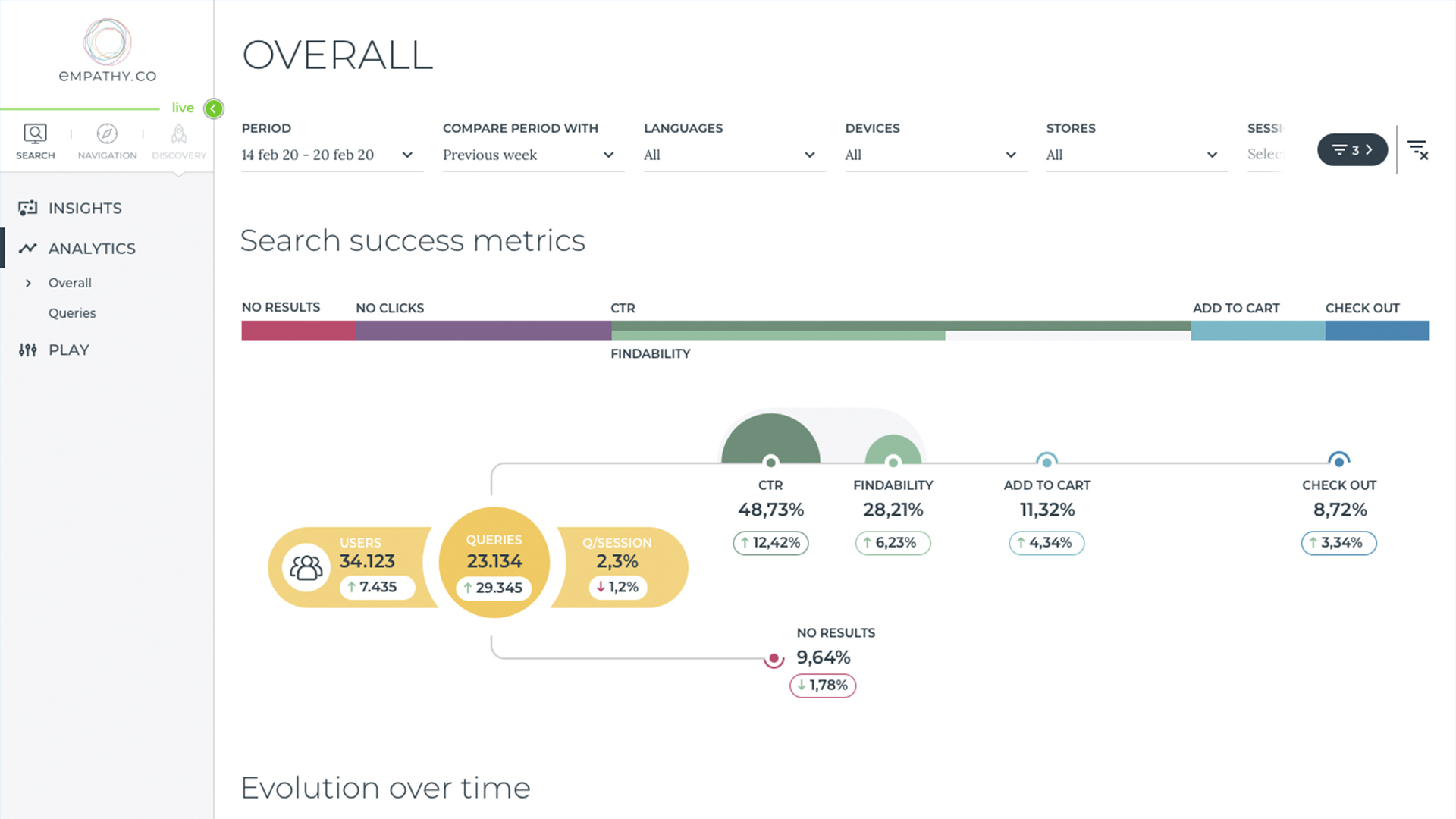The Search Funnel
Conversion funnels are among the most useful reports in the analytics industry. They help you to know how the user behaves when they begin any course of action on your site, making it easier to find pain points for the users that drive them to leave the process or, even worse, leave the site. Usually, when talking about funnel, we think directly about the checkout and the steps from the shopping cart to the purchase confirmation. But we actually can apply a funnel to every process on your site, so you can define steps depending on the goal to be analysed: login, sign up, quote process...
After years of experience dealing with search metrics and analyzing the behavior of users in this field, at Empathy.co we assure you that the moments that precede a search are key to retaining users and having them embrace the catalogue as well as discover new products besides the initial search intention. Here’s how one might apply the funnel to the search experience:
The Search
After a search term is typed or just clicked from the suggestions, there are two possibilities:
- The site shows the product results for the query typed
- No results are found for the specific keyword
That is the first big difference from a typical conversion funnel: You will have two different scenarios to work with.
The No Results rate is a key KPI when analysing search, as this represents the percentage of frustrated searches from your customers. Empathy search analyses pay a lot of attention to the No Results pages, as they are a tricky point, often underutilized. When facing No Results pages, a site can show other options to continue the search experience: trended products, top queries, top clicked products, new products on the catalog.... Here a new search experience begins for the user, keeping them on your site and providing a fresh chance for success.

The Click
On the vast majority of the queries searched, users focus on the search process, seeking results. Once the user visualizes the products, he will click on the most interesting ones. This click represents the second step of the funnel, and it is measured through the CTR.
Here we have another key KPI to know if the search engine is showing the right products: the Findability, that is, the rate of the clicks on products shown on the first page of results. The closer the findability is to the CTR, the better the search engine works as the users are finding what they are looking for, faster.
Some users never click after the search, and you may consider them to have left the funnel. This is the time to focus on those who are not selecting any result. Why did they leave? How has this percentage evolved for the same query in different periods? Did I change something in my catalog or in the product sorting?
The Add to Cart
Finally, if the users like the product, they will add it to cart. At this point we may consider that the whole search process has been successful. The user lands on the site, searches something, finds it easily, the product found is exactly what the shopper needs, and they just add it to the cart. The conversion goal of the search process is achieved!!
The Checkout
The aim of a good search is, of course, to anticipate customer needs and to help them to find what they are looking for. But the objective is also to facilitate the discovery of new products, guiding consumers through the catalogue to explore more products besides the initial search intention. This way they’ll enjoy the ride on our site, and the brand engagement will be strengthened.
But, what about attribution? Surely you have wondered this many times, and that is why the Empathy Tagging API now tracks a new event: the Checkout. By tagging this event on your purchase confirmation page, you’ll know the purchases and the revenue derived from the search. What’s more, you can share the event document with your IT team and collect this valuable information starting now. Try it and tell us if it is useful for you!

As you know, search is much more than transactions and the revenue derived from them. Everything depends on users’ intentions and their mood: Sometimes shoppers want to go straight ahead and find what is on their minds, and sometimes they just need to get inspired, have fun and see if your brand and your catalogue is quite enough for them. That's why every step, every event and every KPI must be considered as critical for us as analysts. The search funnel has been prepared for you to have a great overview of what is happening in your search and to easily detect any gaps or opportunities within the search process. Let’s not underestimate the infinite possibilities of your search, make your users happy and don't forget that, sometimes, they just want you to entertain them and have a good conversation with your catalogue.
